Gender: Summer 2013 Surface Design Journal
August 3, 2013
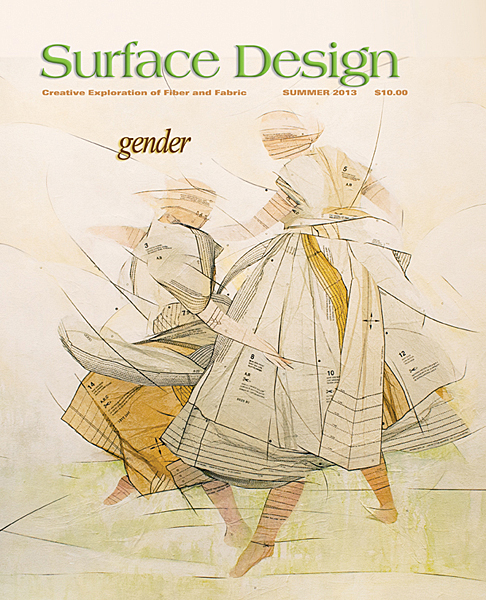 This issue features the work of over a dozen artists new to the Journal. Each one tackles the timely but often touchy theme of Gender from a different perspective: utopian idealism, personal empowerment, communal engagement, feminist theory, and queer pride. I hope you enjoy the challenges and triumphs each story has to offer.
This issue features the work of over a dozen artists new to the Journal. Each one tackles the timely but often touchy theme of Gender from a different perspective: utopian idealism, personal empowerment, communal engagement, feminist theory, and queer pride. I hope you enjoy the challenges and triumphs each story has to offer.
Click here to read a sample of this issue at surfacedesign.org/journal.
Click here to buy this issue in our new SDA Marketplace! surfacedesign.org/marketplace
Find related links to this issue’s profiles and features below.
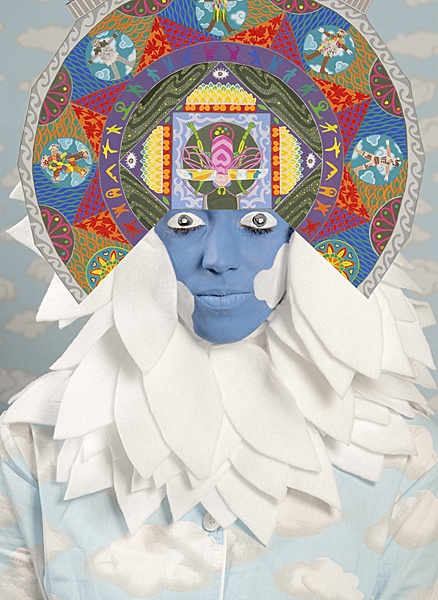 Utopia Now:
Utopia Now:
Saya Woolfalk’s Magical World
by Patricia Malarcher
The notion of an ideal place is at least as old as Plato’s Republic, but Englishman Thomas More’s 16th century book Utopia provided the generic term for a community based on a vision of how to live. New York artist Saya Woolfalk imagines a utopia with a science fiction flavor—hybridization is the motivating idea. Recent sightings of Woolfalk’s visionary universe have occurred on the East and West Coasts.
Yerba Buena Center for the Arts, San Francisco
The Studio Museum in Harlem, New York
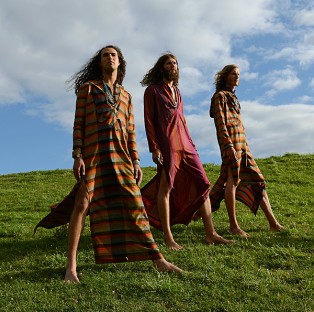 Michael Cepress:
Michael Cepress:
Menswear with Meaning
by Elissa Auther
“Adopting a counterculture mindset is so much more than ‘anything goes.’ It is about liberation—becoming your most authentic self, listening to what the heart truly wants you to be. When people adopt that ethic as their guiding light, the resulting personal style is always beautiful, sexy, and inspired.”—Michael Cepress
Native Funk and Flash: An Emerging Folk Art
 Patterns of Power: John Westmark
Patterns of Power: John Westmark
by Lesli Robertson
The work of Austin, Texas-based artist John Westmark pursues the intersection of material and gender in his newest series Double Bind. Large-scale figurative works of female subjects are created through the combination of paper sewing patterns and paint, garnering a variety of reactions from viewers who are often surprised by the gender of the artist.
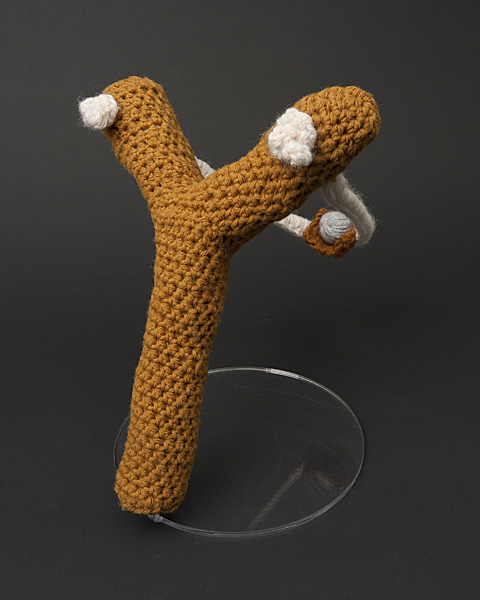 Codes of Conduct
Codes of Conduct
by Stefano Catalani
Feminist artists such as Miriam Schapiro and Judy Chicago expanded the field of artistic language by reclaiming traditional techniques such as sewing, hooking, quilting, and embroidery as their visual vocabulary. Forty years later, queer male artists such as Nathan Vincent, Jeremy Chase Sanders, and Bren Ahearn have appropriated the “feminine” in fiber materials, processes, and traditions to question and disenfranchise stereotypes at work in their lives as a result of societal codes of conduct.
Bellevue Arts Museum, Bellevue, Washington
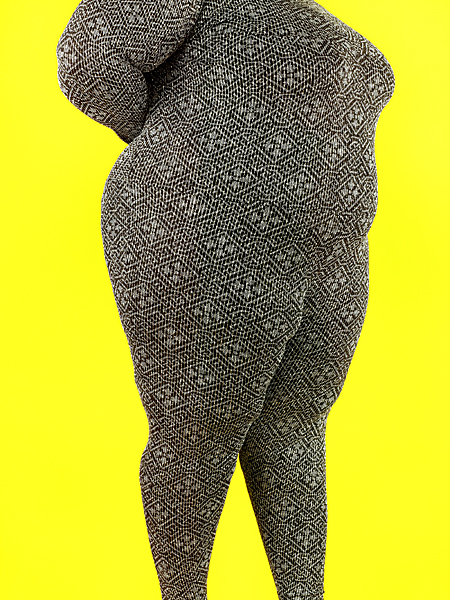 Body Gazing Through the Eye of a Needle
Body Gazing Through the Eye of a Needle
by Lois Martin
Louise Bourgeois’s visceral groundbreaking work first established a foothold in the areas of gender, power, and textiles during the 1950s. She seamlessly moved between materials, working on the same themes in metal, marble, and cloth. Two contemporary figurative artists, Pinar Yolaçan and Erin M. Riley, create striking bodies of work that intersect with Bourgeois in provocative ways. While they in no way resemble each other, all deal with the female form, the gaze, and links between women and weaving or sewing.
Louise Bourgeois‘s estate is represented by
Cheim & Read, New York
 Aaron McIntosh:
Aaron McIntosh:
Queer Country Quilting
by Gabriel Craig
Fifth generation Appalachian quilter Aaron McIntosh prolifically turns out earnest textile-based work that conflates his professional identity as a fiber artist with personal themes of male sexuality, southern culture, and pastoralism.
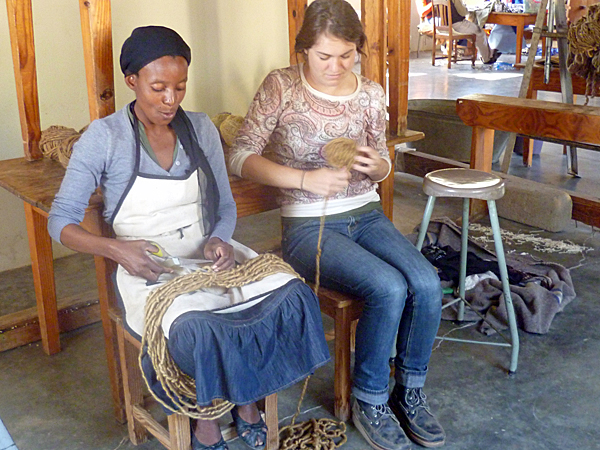 Stories Preserved: Kelsey Viola Wiskirchen
Stories Preserved: Kelsey Viola Wiskirchen
by Joetta Maue
After receiving a Nathan Cummings Travel Grant, Wiskirchen visited the Mapusha Weaving Cooperative in Limpopo Province, South Africa, where women are taught a trade in order to support themselves and their families. As in the US, she witnessed rigid gender roles at play, seeing women leave the co-op due to their husbands’ insecurities over wives’ developing independence and financial success.
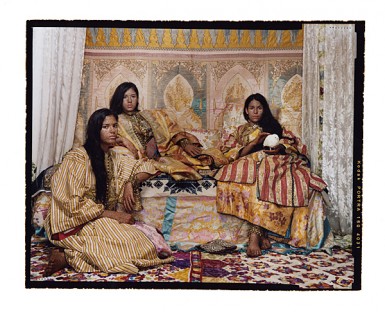 Traditions Rooted in the World of Women
Traditions Rooted in the World of Women
by A.M. Weaver
Two women, one from Morocco and the other from India, share a relationship to contemporary arts practices and the use of cultural signifiers rooted in the world of women. At the top of their game as international artists, Lalla Essaydi and Vibha Galhotra borrow emblems from indigenous cultural traditions, making them integral to their visual lexicons.
Edwyn Houk Gallery, New York
Jack Shainman Gallery, New York
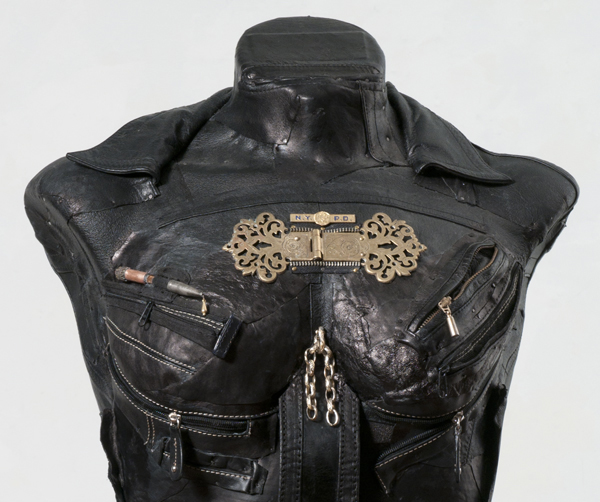 Gender Bending with Linda Stein
Gender Bending with Linda Stein
by Joyce Beckenstein
At first glance, Linda Stein’s mixed-media sculptures stoke the gender stereotypes they reproach. Truncated female torsos clad in sexually charged leather provoke. Curvaceous figures collaged with Wonder Woman comic-strip pulp dazzle. But Stein leaves no doubt about her feminist intent.
Stein’s solo exhibition The Fluidity of Gender will be in display at St. Edward’s University Fine Arts Gallery, Austin, TX (September 5–27, 2013). think.stedwards.edu/fineartsgallery/
Click here to buy this issue in our new SDA Marketplace! surfacedesign.org/marketplace
Click here to read a sample of this issue at surfacedesign.org/journal.


